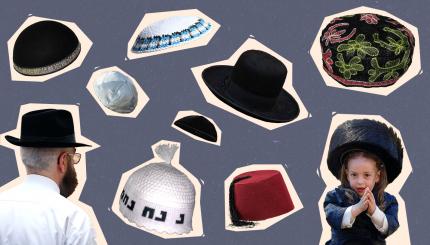In December, the New York Times printed an article about the new fashion guidelines for state legislators in Montana. In the article, a number of women were cited as frustrated by a dress code that they thought unfairly targeted women, and did not provide an appropriate level of respect and frankly, faith, in the female legislators’ professionalism and ability to follow social norms.
It’s fairly common to read about dress codes that unfairly scrutinize girls’ dress in schools, whether it is a Jewish day school or haggling over skirt length and the visibility of collar bones, or a secular school negotiating “leggings as pants” or revealing prom dresses. So I wasn’t fazed by the concept of an unfair dress code, but rather its targeted demographic—adult women professionals, elected officials who could presumably figure out how to dress with decorum, or at the very least, should be able to follow some basic tips from a fashion blog or magazine about what is or isn’t appropriate office attire. Why did they need a list of fashion guidelines handed down from the senior state legislators to tell them how to dress?
It made me wonder: Is there such a thing as a feminist dress code? What would a feminist dress code look like? Is there any way the Montana legislature could have gotten this right, or did the very fact that they were policing adult women’s outfits doom them from the start?
When we critique school dress codes, we often argue that they are overly focused on sexualizing the bodies of women and young girls, but we never hold up the shining example of the perfect feminist dress code, the dress code that those schools should aspire to emulate. Is it because that perfect feminist dress code doesn’t exist?
Most of the time, dress codes seem to be constructed with a focus on covering up women’s bodies and they ignore (or only perfunctorily address) the clothing choices of men and boys. The underlying assumption is that women’s bodies are inherently sexual, and therefore bad, and need to be dealt with, covered up. Whereas men’s bodies, just are, and men need to be dressed “appropriately” but it’s pretty simple to figure out what that means.
Dress codes often have much longer and more detailed guidelines for women. For the men, the core of the instructions might be: no shorts, no jeans, no T-shirts. Whereas for the women it is: no shorts, no jeans, no T-shirts, and then the list continues with a list of body parts: all shirts should have sleeves that cover the shoulder, hemlines should cover the knee, necklines should not be too plunging, etc. The assumption is that women need far more instruction on how to dress appropriately, and what body parts should and shouldn’t be visible, while men should be wearing clothes that are appropriate for the occasion.
So, I repeat my question. What would a feminist dress code look like?
Is it a “balanced” list of restrictions that is a similar length for both women and for men, rather than a list of restrictions on women’s clothes that is twice as long as the men’s list? Is that even possible?
Would it also address the sexuality of men’s bodies? For example—including requirements on the lengths of men’s sleeves and shorts, explicitly prohibiting “Deep V” neck T-shirts for men, or perhaps, prohibiting visible chest hair or undershirts (technically an undergarment, similar to a visible bra strap).
Is it the tone of the dress code? Could we build a dress code that treated both women and men as people who only need a few reminders about the level of formality of a particular environment (e.g no jeans and sneakers, or suits are required), and leave it to individuals to figure the rest out?
Or is it the assumption about the enforcement of the dress code—that the men will be able to follow it naturally and easily, and women will need more guidance and reminders about what is and isn’t appropriate?
So if the Montana state legislature (or your child’s school or camp) were to “re do” their dress code, is there any way they could “do it right?” Could they institute a feminist dress code? Or are dress codes intrinsically sexist and un-feminist?



